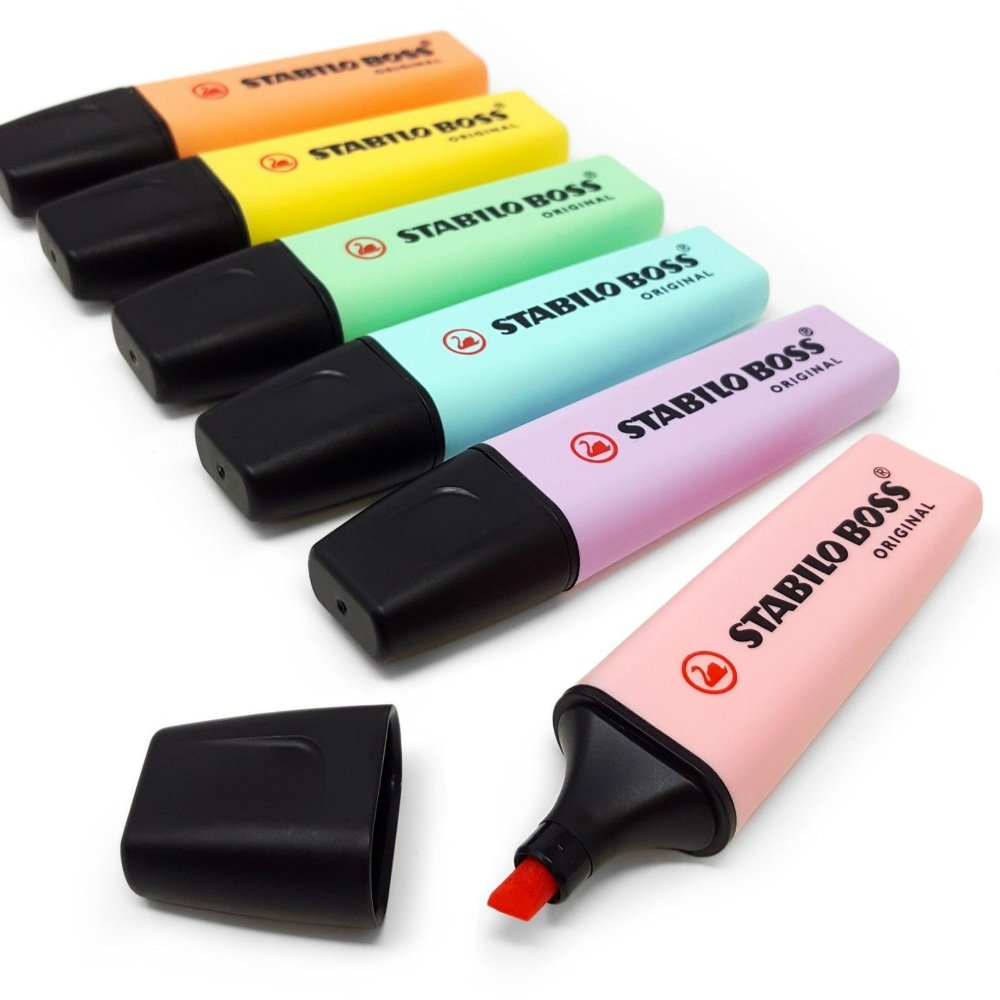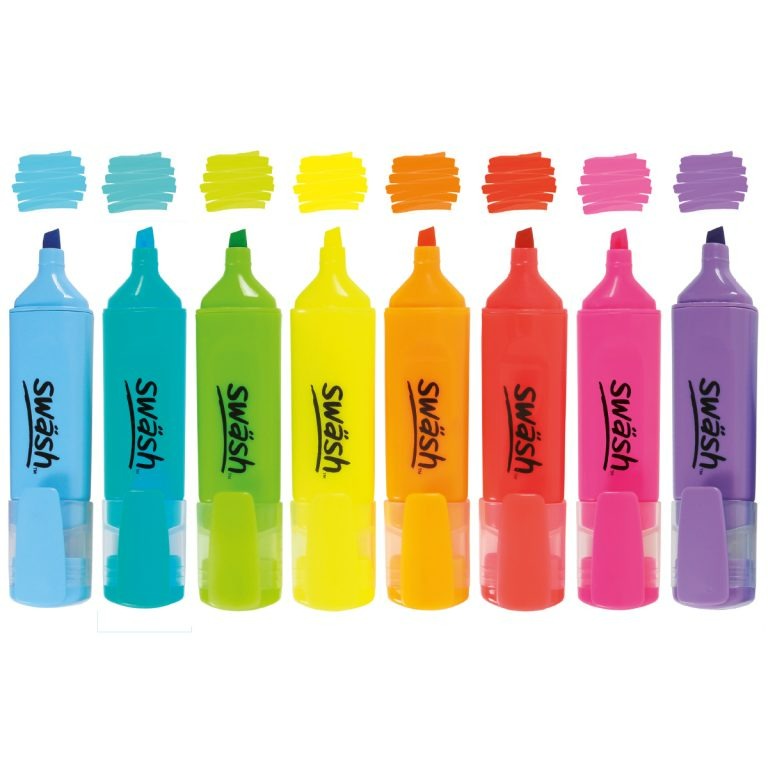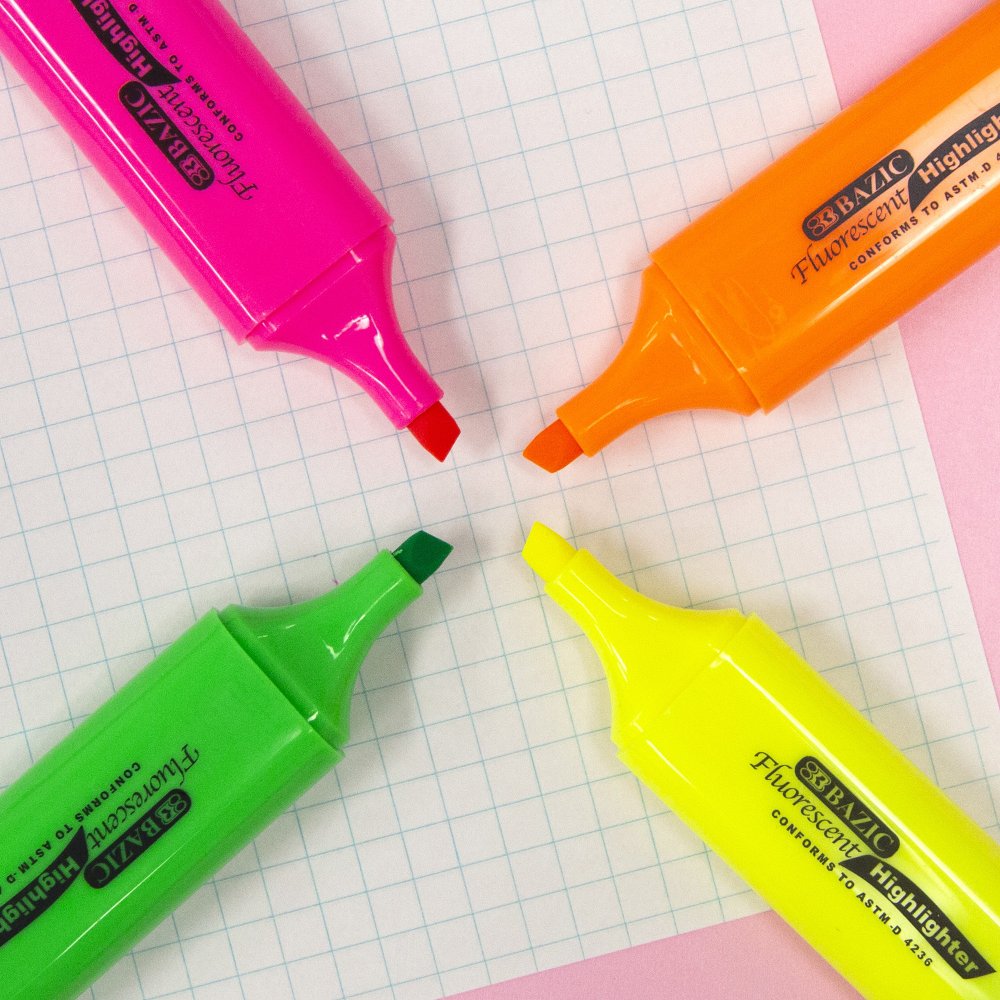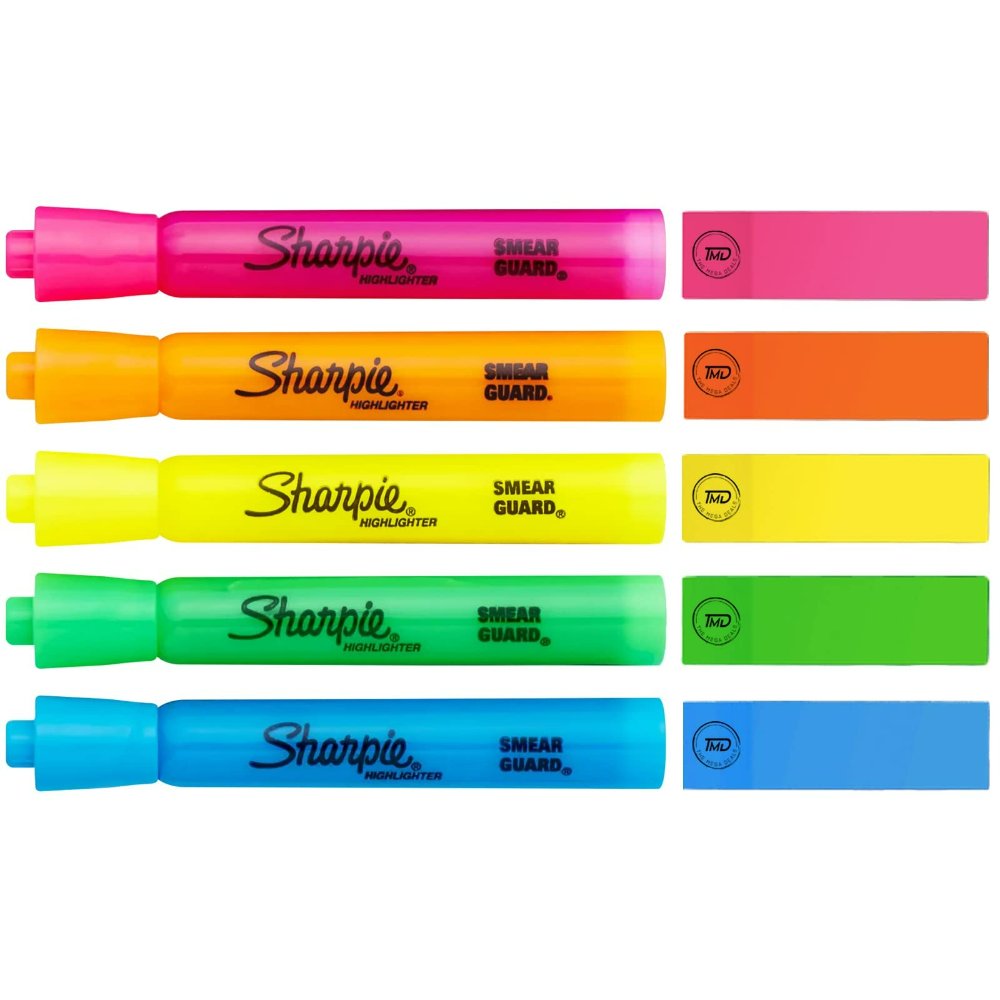In the fast-paced world of academia and professional development, staying organized while effectively absorbing information can make a significant difference in your success. One of the simplest yet most powerful tools at your disposal is the highlighter. While it may seem trivial, using highlighters to categorize, prioritize, and enhance your notes can elevate your study efficiency dramatically. This comprehensive guide delves into the many ways highlighters can be used to organize your notes, boost retention, and streamline the study process.
The Power of Color-Coding: Maximizing the Use of Highlighters
Color-coding notes using highlighters is one of the most effective strategies for improving study efficiency. The human brain is incredibly adept at recognizing colors, which allows for quick visual cues in an otherwise overwhelming sea of information. By utilizing different colors, you can create a structured framework for your notes, making the retrieval of information much easier.
1. Creating a Color Scheme
To maximize the impact of color-coding, it’s essential to develop a consistent color scheme that works for you. For instance, you can designate specific colors for particular themes or categories:
- Yellow for key concepts or definitions.
- Pink for examples or supporting details.
- Blue for important dates or events.
- Green for questions or areas requiring further clarification.
Adhering to the same color scheme throughout your study notes allows your brain to quickly recognize and classify information, facilitating easier recall when it matters most.

2. Enhancing Memory Retention
Color coding not only organizes your notes but also aids in memory retention. Studies have shown that people recall color-coded information more efficiently than monochromatic notes. This is attributed to the cognitive associations formed between colors and content. Each time you review your highlighter-enhanced notes, you’re reinforcing that association, making it easier to recall the information during exams or discussions.
Structuring Your Notes with Highlighters: Effective Techniques
Once you have determined a color scheme, understanding how to apply highlighters effectively within your note-taking strategy is crucial. Several techniques can help you organize your notes in a manner that enhances clarity and understanding.
1. Highlighting Key Information
The primary use of a highlighter is, of course, to emphasize the most important information. However, it is important to apply this technique judiciously to be effective. If everything is highlighted, nothing stands out. Focus on:
- Definitions: When taking notes from textbooks or lectures, highlight core definitions and concepts that form the foundation of the material.
- Main Ideas: Use highlighters to emphasize main ideas, thesis statements, or key arguments in your notes. These are often found in the introduction or conclusion of a lecture or reading material.
By selectively highlighting only the most crucial elements, you create a streamlined version of your notes that is clear and focused, allowing for quicker revisions and better comprehension.
2. Underlining and Circling
In situations where highlighting may dilute the importance of information or where you want to create additional layers for organization, underlining and circling can be employed in conjunction with highlighters. For instance, you might underline significant points and then highlight them in a color associated with that theme.
- Circling Keywords: This method is particularly useful when reviewing complex sentences or paragraphs. Circling keywords can help identify the focus of a sentence and clarify your understanding of the material.
Combining these methods adds another visual dimension to your notes, allowing for an even deeper level of organization while using multiple tools to assist your learning process.

3. Outlining Frameworks
Another effective technique for organizing your notes with highlighters is to establish a clear outline structure.
- Main Headings: Use your selected highlighter color to denote main headings or sections in your notes.
- Subheadings: A different color can be used for subheadings or secondary concepts, helping to delineate the hierarchy of information clearly.
This structured approach allows for faster navigation through your notes and helps to ensure you capture a comprehensive understanding of the material, as it typifies a clear overview of the content being covered.
Boosting Engagement: Interactive Note-Taking with Highlighters
One of the challenges students face is maintaining engagement while studying. Highlighters can help not only to organize but also to actively involve you in the learning process.
1. Integrating Questions into Your Notes
Developing the habit of highlighting questions within your notes encourages a more in-depth understanding. Consider this:
- Use highlighters to circle areas in your notes that prompt further inquiry. This encourages critical thinking and motivates you to seek additional answers.
- Create dedicated sections within your notes to jot down questions, then highlight them to signify importance, ensuring you return to address them later.
By engaging in this proactive approach to questioning your materials, you harness a deeper level of interaction with the content, leading to increased retention and critical analysis skills.
2. Color-Coded Summaries
At the end of each study session, write brief summaries of what you’ve learned, utilizing your highlighters.
- Key Points Summary: Utilize a specific color to write down the key points of the session, using short phrases for quick reference.
- Reflection Questions: After summarizing, use a different color to note any questions or areas of confusion—this proactive strategy will guide your review sessions effectively.
Making colorful summaries encourages active recall and underscores the main ideas, cementing the knowledge in your memory and ensuring continual engagement with the material.

Highlighter Techniques for Different Subjects
The application of highlighters varies somewhat between subjects, as each field may require a different focus and organization strategy.
1. Science and Mathematics
When studying sciences like biology or chemistry, utilize highlighters to:
- Highlight Processes: In biology, highlight key processes, such as cellular respiration or the stages of mitosis, in different colors to create a visual flow of complex systems.
- Formulas: In math, use highlighters to emphasize important formulas or processes in problems, allowing for easy reference when working through exercises.
This focused approach enables a better grasp of multifaceted information and aids in remembering complex sequences in scientific subjects.
2. Humanities and Social Sciences
For literature or history subjects, consider:
- Character Development or Themes: In literature studies, highlighter colors can represent different character arcs or themes throughout a narrative.
- Key Events: In history, identify events, dates, or significant figures using highlighter colors that make connections to related events or ideas.
Using highlighters in this way enhances your understanding of texts on a more intricate level while providing a meaningful way to visualise connections and developments.

Maintaining an Organized System: The Role of Notebooks and Digital Tools
Choosing the right medium for note-taking is essential. Some individuals find traditional notebooks and highlighters to be effective while others prefer digital solutions. Let’s explore how to align your note-taking style with the use of highlighters.
1. Traditional Notebooks vs. Digital Notebooks
While many students may prefer the tactile experience of pen on paper, digital note-taking has its advantages. Consider:
- Traditional Notebooks: They allow the use of various highlighter types without the restrictions of a screen. You can use the style of highlighter that suits you best, be it gel, neon, or liquid ink.
- Digital Tools: Applications like OneNote, Notability, or GoodNotes allow highlighting, color coding, and digital organization. These can sync with your devices, enhancing accessibility.
Ultimately, your personal preferences and learning style will dictate the medium that best supports your note-taking and organizational preferences.
2. Keeping Track of Your Notes
To maintain an organized system, develop a categorization strategy for physical or digital notes:
- Dividers and Tabs: Use dividers or tabs in binders or folders for different subjects. Label each tab with the subject name and highlight the titles for easier access.
- Digital Organization: Create folders on your computer or cloud storage with color-coded themes, mirroring the highlighter strategies used in your physical notes.
These organization techniques will streamline your study process, ensuring quick access to relevant materials and maximizing your study efficiency.
Common Mistakes to Avoid When Using Highlighters
While highlighters can significantly enhance study efficiency, improper use can lead to confusion and frustration. Here are some common mistakes to avoid:
1. Over-Highlighting
One of the most prevalent mistakes is the overuse of highlighters. When every word or sentence is highlighted, readers lose the ability to differentiate crucial information from less important details. Be selective in your highlighting to keep important points from being diluted.

2. Lack of a System
Without a defined color scheme or organizational system, highlights serve no real purpose. Ensure you establish a method that works for you, providing a structured way to categorize and retrieve information.
3. Neglecting Review and Reflection
Merely highlighting is not enough; ensure you periodically review your notes. This process reinforces what you’ve learned and solidifies your understanding. Consider summarizing and creating reflection questions each time you conduct a review to deepen your engagement with the material.
Conclusion: Elevating Your Study Efficiency with Highlighters
Incorporating highlighters into your study routine can revolutionize the way you organize your notes. By leveraging color-coding techniques, structured frameworks, and interactive note-taking strategies, you will boost your study efficiency while enhancing memory retention and comprehension.
Not only do highlighters improve the visual organization of your notes, but they also engage you more deeply in the learning process. This not only keeps your brain actively involved but ultimately aids in the thorough understanding of complex information.
Whether studying for exams, drafting essays, or conducting research, highlighters can serve as indispensable allies in your academic journey. Begin incorporating these strategies today, and watch as your study sessions transform into effective, enjoyable, and organized experiences that lead to tangible success in your academic pursuits.